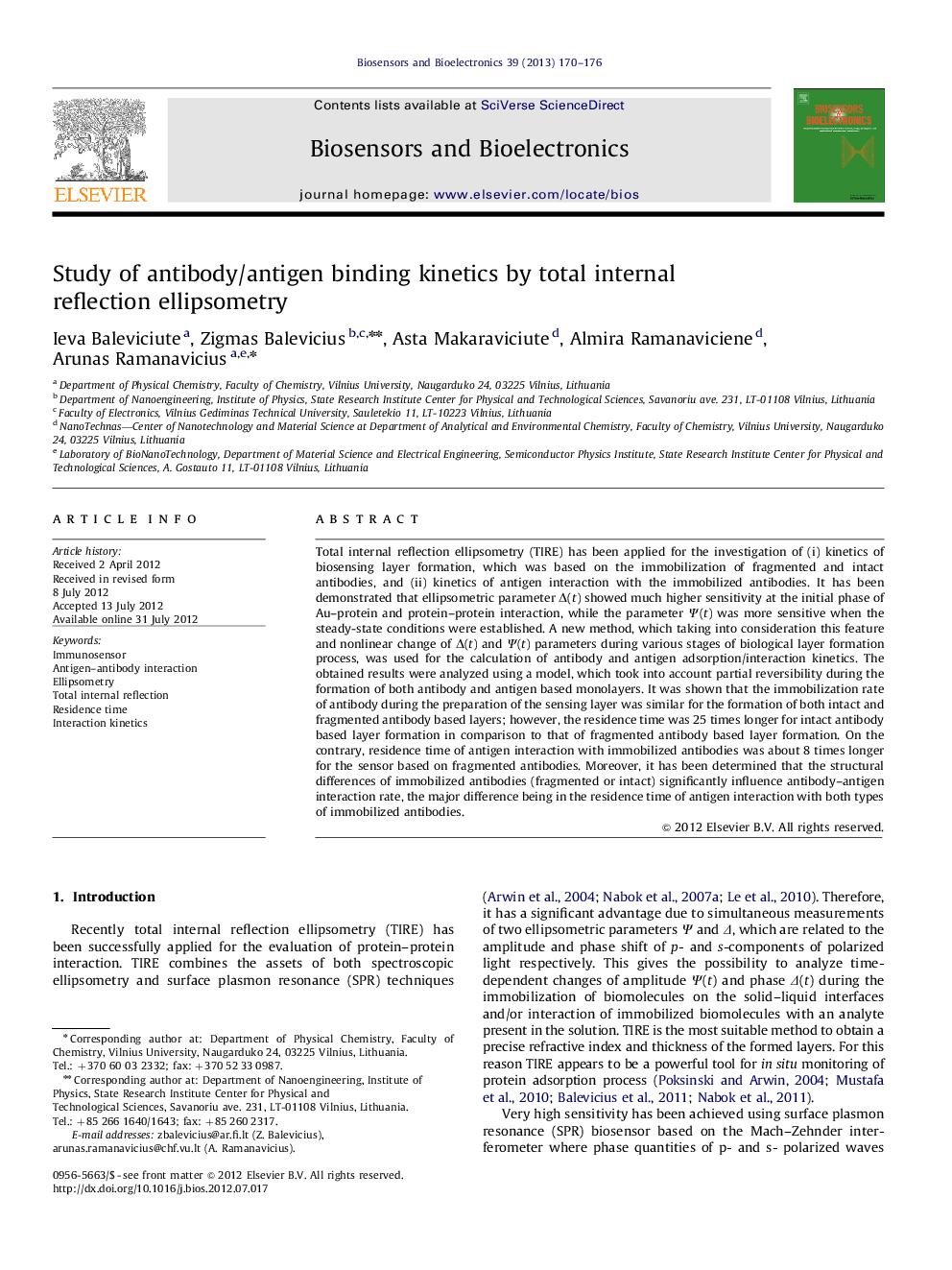| Article ID | Journal | Published Year | Pages | File Type |
|---|---|---|---|---|
| 867224 | Biosensors and Bioelectronics | 2013 | 7 Pages |
Total internal reflection ellipsometry (TIRE) has been applied for the investigation of (i) kinetics of biosensing layer formation, which was based on the immobilization of fragmented and intact antibodies, and (ii) kinetics of antigen interaction with the immobilized antibodies. It has been demonstrated that ellipsometric parameter Δ(t) showed much higher sensitivity at the initial phase of Au–protein and protein–protein interaction, while the parameter Ψ(t) was more sensitive when the steady-state conditions were established. A new method, which taking into consideration this feature and nonlinear change of Δ(t) and Ψ(t) parameters during various stages of biological layer formation process, was used for the calculation of antibody and antigen adsorption/interaction kinetics. The obtained results were analyzed using a model, which took into account partial reversibility during the formation of both antibody and antigen based monolayers. It was shown that the immobilization rate of antibody during the preparation of the sensing layer was similar for the formation of both intact and fragmented antibody based layers; however, the residence time was 25 times longer for intact antibody based layer formation in comparison to that of fragmented antibody based layer formation. On the contrary, residence time of antigen interaction with immobilized antibodies was about 8 times longer for the sensor based on fragmented antibodies. Moreover, it has been determined that the structural differences of immobilized antibodies (fragmented or intact) significantly influence antibody–antigen interaction rate, the major difference being in the residence time of antigen interaction with both types of immobilized antibodies.
Graphical abstractFigure optionsDownload full-size imageDownload as PowerPoint slideHighlights► Advantages of ellipsometric parameters Psi (Ψ(t)) and Delta (Δ(t)) were demonstrated. ► The Δ(t) parameter shows larger sensitivity at the initial phase of interaction. ► The Ψ(t) parameter is more sensitive at the end of the monolayer formation process.
